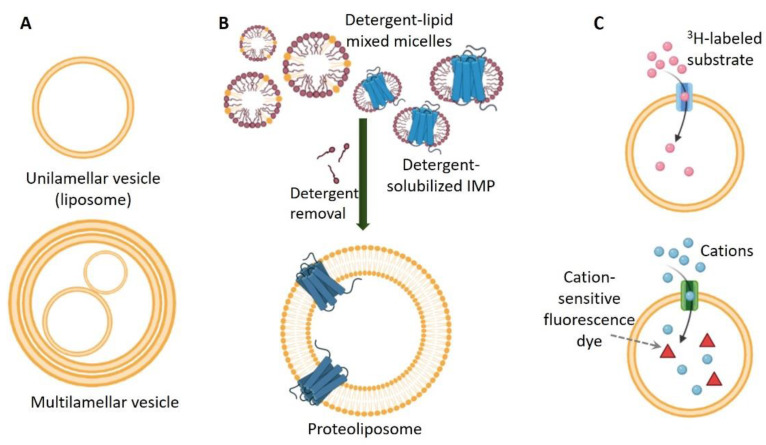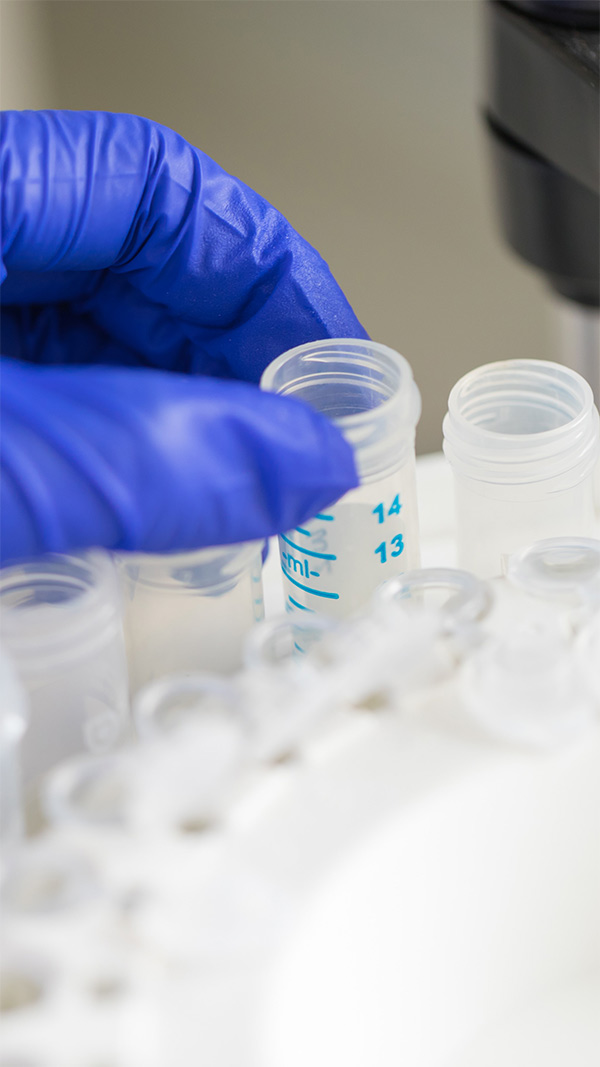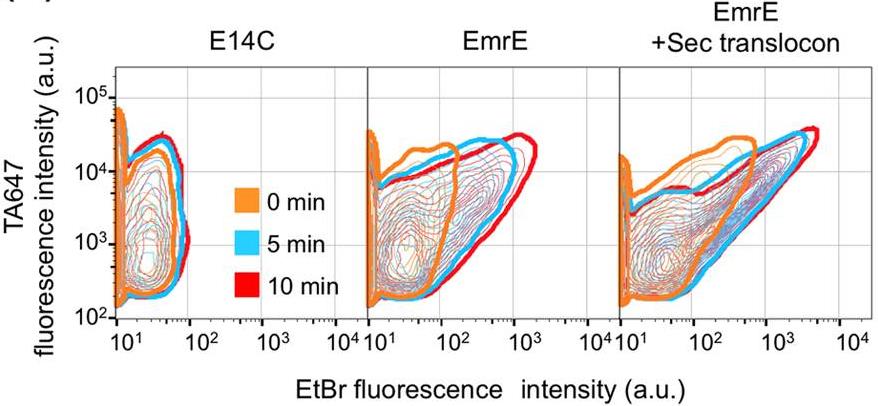Liposome Technology Platform
Background
Overview
Membrane proteins play a crucial role in cellular functions like signal transduction, molecular transport, and cell communication. They are key targets in drug development, with around 60% of approved drugs targeting these proteins. However, their hydrophobic nature and complex structures make expressing and purifying them challenging, as maintaining their natural conformation and function outside the cell is difficult.
Liposome Technology offers a solution by simulating a biological membrane environment, providing a stable system for studying membrane proteins. This technology is instrumental in overcoming the hurdles associated with membrane protein research. Our company leverages liposome technology along with advanced expression systems to offer comprehensive membrane protein expression and analysis services. We empower our clients to achieve breakthroughs in membrane protein research and related fields.

Fig. 1. Integral membrane proteins in liposomes. (Majeed, et al. 2021)
Advantages of Liposome Technology Platform
Provide a stable environment : Liposomes, consisting of phospholipid bilayers, effectively mimic cell membranes. They aid in the proper folding of membrane proteins and help maintain their functionality.
Boost functional activity : By incorporating membrane proteins into liposomes, we can keep their natural shape and enhance their bioactivity. This makes it easier to conduct functional studies.
Adaptable to various analytical techniques : Liposome-membrane protein complexes work well with methods like Cryo-EM, NMR, and SPR. This compatibility supports high-resolution structure analysis and studies of molecular interactions.
Avoid detergent damage : With liposome systems, there’s no need for harsh detergents, avoiding any harm to the natural structure and function of membrane proteins.
Applications of Liposome Technology Platform
Membrane Protein Expression and Purification
By using liposome tech to blend membrane proteins into artificial liposomes, you get purer, more stable samples, perfect for further study.
Studying Membrane Protein Functions and Structure
Liposomes can precisely measure things like enzyme activity, ligand binding, and signal transduction of membrane proteins, and they really help when figuring out structures at a high resolution.
Drug Screening and Molecular Interaction Research
Liposome-membrane protein combos are great for drug tests, high-throughput screening, and checking out how molecules interact, which is super helpful in new drug development.
Vaccine and Therapeutic Antibody Development
Liposome tech is key in designing targeted vaccines and therapeutic antibodies, particularly when tackling viral infections and cancer-related immune responses.
Service Details
Service Process


What We Offer?
- Membrane Protein Expression and Liposome Integration : We use various expression systems like E. coli, yeast, insect cells, and mammalian cells to crank out the target membrane proteins. Then, we blend these proteins into lab-made liposomes to make sure they fold right and keep their activity.
- Purifying Membrane Protein-Liposome Complexes : We use cutting-edge purification techniques to collect super pure membrane protein-liposome complexes. Whether you’re tackling complex experiments or straightforward analyses, our approach helps set the stage for success.
- Analyzing Function and Structure : We offer insights into how membrane proteins behave and what they’re all about. From checking out how these proteins bind with ligands to measuring enzyme activity, we’ve got you want to do. Plus, we help you get a clear picture of their structure, so you can really get to know their biological characteristics.
- Drug Screening and Interaction Studies : Membrane protein-liposome complexes are also our go-to for drug screening and studying how molecules interact with one another—all to push forward new drug discoveries.
Why Choose Us?
- Expertise You Can Count On : Our skilled team specializes in everything from membrane protein expression to liposome reconstitution and functional analysis, offering comprehensive tech support along the way.
- Tailored Solutions : We design custom plans for protein expression and liposome integration based on the unique characteristics of your target protein to meet your specific research needs.
- Cutting-Edge Technologies : Using advanced techniques like Cryo-EM and NMR, we ensure that membrane proteins maintain their natural shape and are fully functional.
- Efficiency and Reliability : Our streamlined expression and purification processes deliver stable, high-quality membrane protein-liposome complexes you can rely on.
- Flexible Service Options : We offer adaptable services that can scale from small trials to large-scale production, ensuring quick delivery to meet urgent research timelines.
Case Study
Case 1: Liposomes to the Rescue: Boosting Membrane Protein Solubility
Membrane proteins are essential for cellular jobs and play a big role in drug discovery, but making and folding them can be tough. Their hydrophobic character means they often clump together. Adding liposomes during cell-free translation has been shown to prevent this aggregation. Our extensive study on 85 membrane proteins from E. coli demonstrated that liposomes improved solubility in over 90% of cases and increased protein yields. This finding not only sheds light on liposome effects but also opens doors for advancements in membrane protein engineering for pharmaceuticals and nanotechnology.

Fig. 2. Correlation between protein solubility and properties of the transmembrane domains for 78 proteins. (Niwa, et al. 2015)
Case 2: Boosting Membrane Protein Action Inside Liposome Cells
Creating proteins in cell-sized liposomes using an IVTT system is a great way to explore how biological systems behave like real cells. Until now, these liposome setups didn’t include the part needed for membrane protein translocation. Researchers have cracked that by adding the SecYEG translocon from E. coli to these liposomes. This setup, which mimics actual cells, helps with membrane protein production. Using the E. coli transporter EmrE as an example, they saw a threefold boost in both its production and activity inside liposomes with the translocon. Plus, they improved membrane integration for several E. coli proteins, paving the way for crafting artificial cells from the ground up.

Fig. 3. Two-dimensional FCM data (counter plot) showing the EtBr transport activity of EmrE-displaying liposomes. (Ohta, et al. 2016)
Case 3: Unlocking Membrane Mysteries: Streamlining Protein Study
Exploring membrane proteins is crucial for understanding cell function and metabolism, but traditional cell-based systems often make it tough to express and purify them. Enter cell-free protein synthesis—screening these tricky proteins using various lipid-like environments. In this high-throughput screening of 61 eukaryotic membrane proteins, researchers discovered that 57% could be expressed in solubilized form with some lipid mimetics, notably detergents, outperforming others. This method helped to produce and test mitochondrial pyruvate carrier complexes, proving they form proper complexes and bind substrates effectively.

Fig. 4. Cell‐free expression in liposomes. (Bruni, et al. 2022)
FAQs
-
Q: How do I choose a presentation system that suits my research needs?
A: Based on your target membrane protein characteristics (such as size, hydrophobicity, complexity) and experimental objectives, we will recommend the best expression system (such as E. coli, yeast, mammalian or insect cells) and provide specific optimization protocols to ensure efficient expression and functional activity. -
Q: How does the liposome system guarantee the natural structure and function of membrane proteins?
A: Liposome technology supports the correct folding and natural conformation of membrane proteins by simulating the biofilm environment. We use optimized lipid types and ratios, as well as advanced recombination methods, to ensure functional integrity of membrane proteins.
-
Q: What is the project cycle and delivery time?
A: The specific cycle depends on the complexity of the target membrane protein and the size of the project. Under normal circumstances, we can complete the sample preparation and delivery within a few weeks after the solution is confirmed, to meet the urgent project needs of fast delivery service.
References
- Majeed S.; et al. Lipid Membrane Mimetics in Functional and Structural Studies of Integral Membrane Proteins. Membranes (Basel) . 2021;11(9):685.
- Niwa T.; et al. Comprehensive study of liposome-assisted synthesis of membrane proteins using a reconstituted cell-free translation system. Sci Rep . 2015;5:18025.
- Ohta N.; et al. In vitro membrane protein synthesis inside Sec translocon-reconstituted cell-sized liposomes. Sci Rep. 2016;6:36466.
- Bruni R.; et al. High-throughput cell-free screening of eukaryotic membrane protein expression in lipidic mimetics. Protein Sci. 2022;31(3):639-651.
Contact us or send an email at for project quotations and more detailed information.
Quick Links
-

Papers’ PMID to Obtain Coupon
Submit Now -

Refer Friends & New Lab Start-up Promotions

